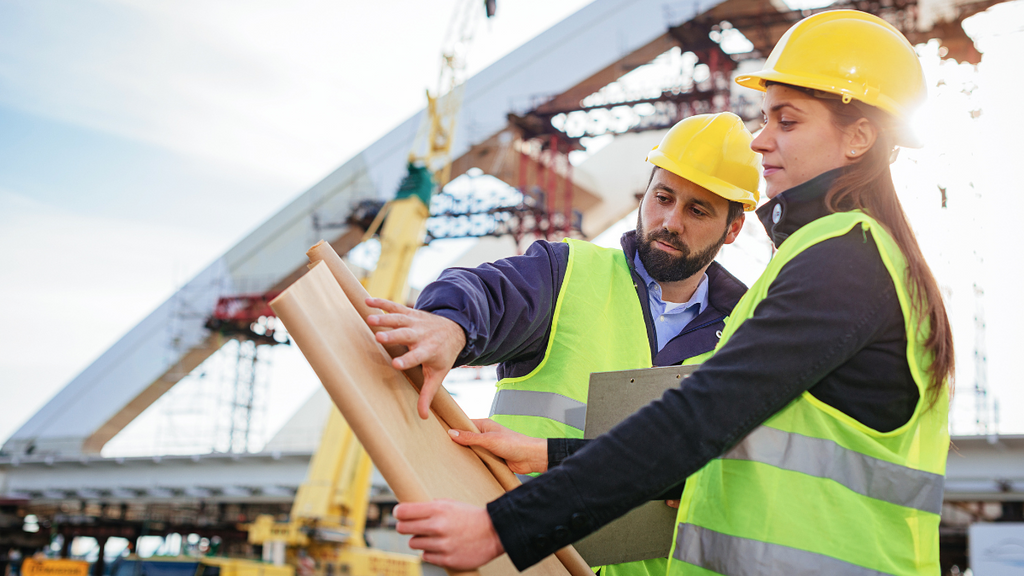Geotheta Fundamentals Explained
Geotheta Fundamentals Explained
Blog Article
The Best Guide To Geotheta
Table of ContentsThe Ultimate Guide To GeothetaSome Ideas on Geotheta You Need To KnowGeotheta for DummiesLittle Known Questions About Geotheta.The Main Principles Of Geotheta

They perform site investigations, gather examples, perform lab examinations, and examine information to evaluate the viability of the ground for construction jobs - Consulting Engineers. Based on their searchings for, geotechnical designers supply suggestions for structure style, slope security, preserving structures, and mitigation of geotechnical hazards. They work together with various other experts, such as designers, structural engineers, and construction teams, to make certain that geotechnical considerations are integrated right into the total job layout and implementation
By analyzing the actions and properties of dirt and rock, they can recognize potential geotechnical threats such as landslides, dirt negotiation, or incline instability. Their knowledge aids prevent failures or mishaps that can endanger lives and building. Here are some thorough obligations and obligations of a geotechnical engineer: Site Investigation: Geotechnical engineers conduct site investigations to collect data on subsurface conditions.
They analyze the information to understand the residential properties and actions of the soil and rock, including their toughness, leaks in the structure, compaction features, and groundwater problems. Geotechnical Analysis and Style: Geotechnical engineers evaluate the information collected during website investigations to assess the stability and suitability of the site for construction projects. They execute geotechnical computations and modeling to review elements such as birthing capability, settlement, slope security, lateral planet stress, and groundwater flow.
Geotheta Can Be Fun For Everyone
Foundation Design: Geotechnical engineers play a critical duty in making structures that can securely support the intended structure. They assess the dirt conditions and load requirements to determine the proper structure type, such as superficial structures (e.g., grounds), deep foundations (e.g (https://justpaste.it/ec966)., heaps), or specialized methods like soil renovation. They consider variables such as negotiation limitations, birthing capacity, and soil-structure communication to establish ideal foundation designs
They evaluate building and construction plans, screen site activities, and carry out field evaluations to verify that the design suggestions are adhered to. If unanticipated geotechnical concerns arise, they examine the scenario and offer recommendations for remediation or adjustments to the layout. Threat Analysis and Mitigation: Geotechnical designers examine geotechnical dangers and dangers linked with the task site, such as landslides, liquefaction, or soil disintegration.

Cooperation and Interaction: Geotechnical engineers work very closely with other professionals associated with a job, such as architects, architectural designers, and construction groups. Efficient communication and collaboration are vital to integrate geotechnical considerations right into the overall job design and building procedure. Geotechnical designers give technological knowledge, answer queries, and make sure that geotechnical requirements are fulfilled.
Geotheta Can Be Fun For Anyone
Right here are some sorts of geotechnical designers: Foundation Designer: Foundation designers focus on designing and assessing foundations for frameworks. They evaluate the dirt problems, load requirements, and site characteristics to establish the most suitable structure type and layout, such as shallow structures, deep structures, or specialized methods like heap foundations.
They examine the elements influencing incline security, such as dirt residential or commercial properties, groundwater problems, and slope geometry, and develop techniques to avoid incline failures and mitigate dangers. Earthquake Designer: Quake engineers focus on assessing and creating structures to stand up to seismic forces. They examine the seismic hazard of a site, assess dirt liquefaction possibility, and establish seismic design requirements to make sure the safety and strength of frameworks throughout quakes.
They execute area screening, gather samples, and analyze the collected information to identify the dirt homes, geologic formations, and groundwater problems at a site. Geotechnical Instrumentation Designer: Geotechnical instrumentation designers focus on tracking and measuring the actions of soil, rock, and structures. They mount and preserve instrumentation systems that monitor factors such as dirt settlement, groundwater degrees, slope activities, and architectural variations to evaluate performance and offer very early warnings of possible concerns.
The Best Guide To Geotheta
They conduct tests such as triaxial tests, loan consolidation examinations, straight shear tests, and leaks in the structure tests to gather data for geotechnical analysis and design. Geosynthetics Designer: Geosynthetics engineers specialize in the style and application of geosynthetic products, such as geotextiles, geogrids, and geomembranes. They utilize these materials to improve dirt stability, enhance slopes, offer drain solutions, and control disintegration.
They often tend to be investigatory people, which means they're intellectual, reflective, and curious. They wonder, methodical, reasonable, logical, and rational. Some of them are likewise social, meaning they're kind, generous, participating, individual, caring, helpful, empathetic, sensible, and pleasant. Does this seem like you? Take our complimentary profession examination to figure out if geotechnical engineer is just one of your leading occupation suits.
In the office atmosphere, geotechnical designers make use of specialized software program devices to carry out calculations, create designs, and assess data. They prepare reports, testimonial job specifications, connect with clients and staff member, and coordinate task activities. The office setup gives a favorable environment for study, analysis, and cooperation with other experts entailed in the task.
Some Ideas on Geotheta You Should Know
They often see project sites to perform site examinations, examine geotechnical conditions, and collect data for analysis. These visits include taking a trip to various places, often in remote or difficult terrains. Geotechnical resource designers may perform soil sampling, conduct tests, and display building and construction tasks to make certain that the geotechnical elements of the project are being executed properly.
Geotechnical designers additionally work in specialized geotechnical research laboratories. Geotechnical research laboratory designers work extensively in these atmospheres, dealing with screening devices, running instruments, and recording data.
Report this page